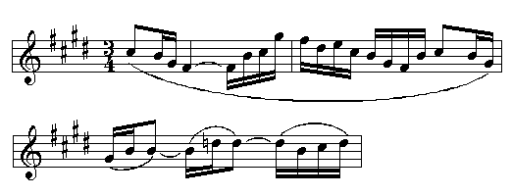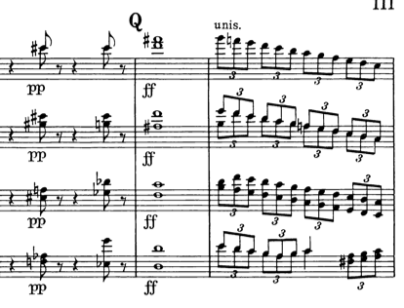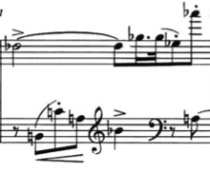Sian Jackson
Joe Lloyd
15 September 2014
Australian Music
“The days of indie artists are numbered as we have the airwaves under our control and we’re not gonna let it go. We know what the public want and by hell we have the music factory to make and give it.”
Australian music, and music in general, is a beautifully diverse art form. There are so many genres and sub genres already established, and more being created every minute.(Musicinaustralia.org.au, n.d.) This diversity would not be possible without the sheer number of unique independent artists that create music. This quote (made by the CEO of an unknown company) challenges this idea by saying that large record labels such as themselves have no need of new artists because they already have the ‘diversity’ because they are so large. But this statement is very untrue. Their definition of diversity is flawed, as companies cater to specific audiences. They might have multiple different genres, but most end up sounding very similar to pop due to the specificity of the target audience.
An example of this is Kylie Minogue, one of Australia’s most well known pop musicians. Originally an actress, she was picked up by Stock, Aitken, and Waterman (SAW); an English songwriting and record producing trio after her first single “Loco-Motion” spent a few weeks at the top of Australian charts. She recorded some singles, maintaining her ‘girl next door’ image that was encouraged by SAW but when she tried to portray a more mature style in her music and public image her album sales began to decline. In 1992 she broke with SAW to become an independent artist.
This break was very illustrative of the reason that large companies such as SAW do not actually ‘control the airwaves’. Looking at other music that SAW has produced, it becomes apparent that they are lacking in diversity and focus solely on catering to the masses. Beginning in 1984 with Dead Or Alive’s album “Youthquake”, which “favored an exuberant blend of Hi-NRG (which was essentially late-’70s Euro-disco with a more high-tech production style) and pop/rock.” (AllMusic, n.d.). This never changed when they got to working with Minogue. SAW not only produced and wrote most of her songs while she was working with them, but they were trying to control the image that she put forward in her videos. As soon as Minogue wanted more creative input she was brutally rebuffed and left soon afterward. Minogue’s most popular albums such as “Light Years” and “Fever” were produced independently, or with minor influence from other artists.
Kylie Minogue helped prove that without independent artists and their own opinions and styles music cannot progress past a certain point. Popular music is often merely a variation on the same theme with different lyrics. An indie music band by the name of Axis of Awesome proved this by creating a song using only four chords and managing to work 37 songs into a five minute mash up. When introducing this song they wonder why they’ve “never had a hit”, and one member of the group replies, “Well, because we’ve never had a four chord song…” (Axis of Awesome – Four Chord Song, 2014) The whole piece is played in D major, usually beginning with Journey’s “Don’t Stop Believing” but then moving to a range of different pieces. The thing that makes the song work is the fact that the most popular chord progression in popular music is the I | V | VI | IV progression. By transposing any piece using this chord progression to D major Axis of Awesome can fit just about any pop song they want into their piece. The reason this and variations on this chord progression are so popular is because of the voice leading. The voice leading is the way that two notes move between one another. In this chord progression, there is no complex interactions between notes, it all moves in steps. This makes it not only incredibly simple to play, but also very simple to place a melody over. In any given variation of this chord progression the singer will only have to move up or down one step to keep the melody chordal. This means that many popular songs only move between two or three notes for their melody to keep it memorable and simple. For example the motif of “Don’t Stop Believin’” moves between the notes A, F, G, C, and D. This is considered a more complex melody for popular music compared to a melody such as “Love Story” by Taylor Swift where the melody uses a total of three notes: C, D, and E.
Journey’s “Don’t Stop Believing” (Left)
Taylor Swift “Love Story” Melody (Right)
Even though “Journey” is obviously more complex than “Love Story”, it’s definitely not a complex piece. It still uses the same chord progression, and is therefore much more simplistic than pieces that evolve beyond these four chords. Indie music is often more experimental and includes more highly developed chord progressions and melodies. “Curator” by Australian band Ne Obliviscarus is a perfect example of this. Ne Obliviscarus is a progressive metal band founded in 2003. Since then they have released two albums and signed with independent label Season of Mist. “Curator” is found on their second album, Citadel. It begins with a simplistic call and response melody over a chordless sound on an electric guitar and a simple drum beat. The melody moves: B, G, F#, C, E, F#, G, E. It is then harmonised with a fast and quiet counter melody moving: G, F#, C, A, G, F#, G. Even with these two elements it creates a much more complex sound than “Love Song” because it is uncommon to find multiple melodies in a ‘pop’ song, rather they tend to use a single melody harmonised with chords underneath.
Because Australian pop music vs. indie music is such a broad term that could be responded to in so many different ways a survey has been utilised to gather responses on common issues with Australian popular music and large record labels versus independent artists. The first question asked in the survey gathered the largest response – “do you think the current morality values portrayed in popular music are descriptive of Australian morals?”. 57% of respondents said ‘no’, and another 33% were undecided. Most of the comments included phrases such as “popular music is Americanised, Australian morals aren’t the sane as American morals”. The respondents who answered ‘yes’ on the survey all had comments along the lines of “sadly, they are”. Not one respondent was pleased with the idea that the morals and values portrayed in popular music were starting to be mirrored in Australian life.
The next question in the survey was “are you concerned with supporting underground/independent artists”. This question was spurred by the Australian ideal of ‘mateship’ and the stereotype of Australians being willing to lend a hand and help one another out. A staggering majority (the second most of any in the survey) of 76.2% answered yes. The quote above states that “we know what the public want, and by hell we’ve got the music factory to make and give it”. But these responses prove that statement to be wrong. One respondent went as far as to say “I have no concern supporting underground Australian artists – in fact, I would strongly support further investment and government grants supporting the professional development and advancement of Australian independent artists”. This shows that the people want to hear more of independent artists, and help them develop into their own unique sound and style. How will a “music factory” possibly be able to create this from a practically canned style that is forced upon most artists who sign with them. For example Shannon Noll and Kylie Minogue’s forced style change.
Americanisation was the next issue examined, and prompted by the question “do you believe that Australian music is becoming Americanised” 85.75% of respondents answered ‘yes’. This wasn’t surprising, but the comment that set the argument against the above quote in concrete was “As far as major record labels, definitely. But underground/independent artists are far more likely to maintain a uniquely Australian flavour.” This shows that the general public agrees that Australian music will lose its identity if we continue on this Americanised path. There were a few similar comments, all about how “most Australian artists must become hits in America in order to achieve global success. It is disappointing that Australian billboards are populated by American artists and Australian artists are being ignored”. All of these responses show how much the general public cares about Australian artists, Australian musical identity, and over Americanisation. From what they have said in their responses, they don’t believe that any kind of “music factory” could possibly create such a unique sound as an independent artist could.
References
AllMusic, (n.d.). Stock, Aitken & Waterman | Biography | AllMusic. [online] Available at: http://www.allmusic.com/artist/stock-aitken-waterman-mn0000628042/biography [Accessed 8 Sep. 2014].
Axis of Awesome – Four Chord Song. (2014). Available at: https://www.youtube.com/watch?v=5pidokakU4I [Accessed 12 Oct. 2014].
Biography.com, (2014). [online] Available at: http://www.biography.com/people/kylie-minogue-507447#early-career-acting-and-music [Accessed 8 Sep. 2014].
Musicinaustralia.org.au, (n.d.). Genres – Music in Australia – Knowledge Base. [online] Available at: http://www.musicinaustralia.org.au/index.php?title=Genres [Accessed 13 Oct. 2014].
Ne Obliviscaris – Curator. (2014). Available at: https://www.youtube.com/watch?v=UTYbdaKMQc8&spfreload=10%20Message%3A%20JSON%20Parse%20error%3A%20Unexpected%20EOF%20(url%3A%20https%3A%2F%2Fwww.youtube.com%2Fwatch%3Fv%3DUTYbdaKMQc8) [Accessed 13 Oct. 2014].
Surveymonkey.com, (2014). SurveyMonkey – Australian Music. [online] Available at: https://www.surveymonkey.com/analyze/XN9NTbQgzDh_2F3kCY_2F_2FbXUcJCFI6iSKWGPlxDBNK0P5Y_3D [Accessed 13 Oct. 2014].
Wikipedia, (2014). Kylie Minogue. [online] Available at: http://en.wikipedia.org/wiki/Kylie_Minogue [Accessed 8 Sep. 2014].
Wikipedia, (2014). Fever (Kylie Minogue album). [online] Available at: http://en.wikipedia.org/wiki/Fever_(Kylie_Minogue_album) [Accessed 8 Sep. 2014].
Wikipedia, (2014). The Axis of Awesome. [online] Available at: http://en.wikipedia.org/wiki/The_Axis_of_Awesome#.22Four_Chords.22 [Accessed 13 Oct. 2014].





















